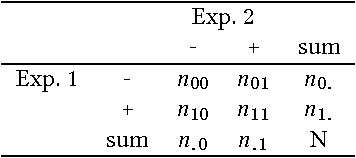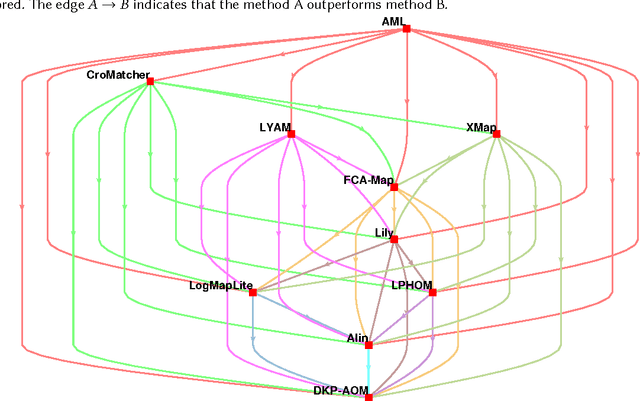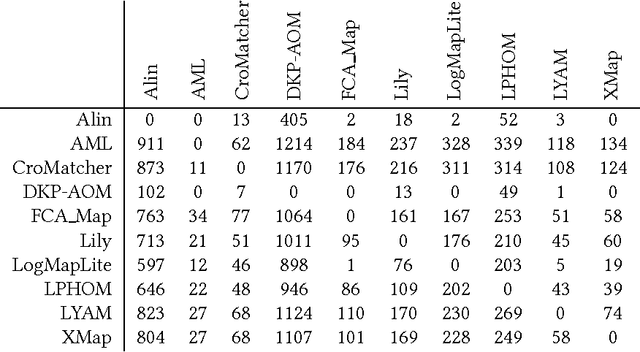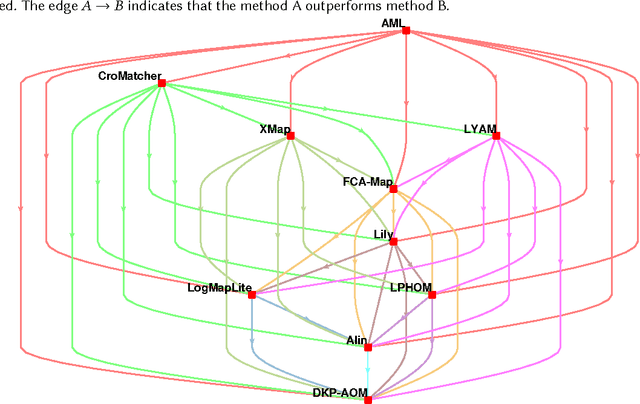Wout Hofman
SANOM Results for OAEI 2019
Jun 09, 2020



Abstract:Simulated annealing-based ontology matching (SANOM) participates for the second time at the ontology alignment evaluation initiative (OAEI) 2019. This paper contains the configuration of SANOM and its results on the anatomy and conference tracks. In comparison to the OAEI 2017, SANOM has improved significantly, and its results are competitive with the state-of-the-art systems. In particular, SANOM has the highest recall rate among the participated systems in the conference track, and is competitive with AML, the best performing system, in terms of F-measure. SANOM is also competitive with LogMap on the anatomy track, which is the best performing system in this track with no usage of particular biomedical background knowledge. SANOM has been adapted to the HOBBIT platfrom and is now available for the registered users.
Comparison of ontology alignment systems across single matching task via the McNemar's test
Apr 20, 2018



Abstract:Ontology alignment is widely-used to find the correspondences between different ontologies in diverse fields.After discovering the alignments,several performance scores are available to evaluate them.The scores typically require the identified alignment and a reference containing the underlying actual correspondences of the given ontologies.The current trend in the alignment evaluation is to put forward a new score(e.g., precision, weighted precision, etc.)and to compare various alignments by juxtaposing the obtained scores. However,it is substantially provocative to select one measure among others for comparison.On top of that, claiming if one system has a better performance than one another cannot be substantiated solely by comparing two scalars.In this paper,we propose the statistical procedures which enable us to theoretically favor one system over one another.The McNemar's test is the statistical means by which the comparison of two ontology alignment systems over one matching task is drawn.The test applies to a 2x2 contingency table which can be constructed in two different ways based on the alignments,each of which has their own merits/pitfalls.The ways of the contingency table construction and various apposite statistics from the McNemar's test are elaborated in minute detail.In the case of having more than two alignment systems for comparison, the family-wise error rate is expected to happen. Thus, the ways of preventing such an error are also discussed.A directed graph visualizes the outcome of the McNemar's test in the presence of multiple alignment systems.From this graph, it is readily understood if one system is better than one another or if their differences are imperceptible.The proposed statistical methodologies are applied to the systems participated in the OAEI 2016 anatomy track, and also compares several well-known similarity metrics for the same matching problem.
Solving the L1 regularized least square problem via a box-constrained smooth minimization
Mar 06, 2018


Abstract:In this paper, an equivalent smooth minimization for the L1 regularized least square problem is proposed. The proposed problem is a convex box-constrained smooth minimization which allows applying fast optimization methods to find its solution. Further, it is investigated that the property "the dual of dual is primal" holds for the L1 regularized least square problem. A solver for the smooth problem is proposed, and its affinity to the proximal gradient is shown. Finally, the experiments on L1 and total variation regularized problems are performed, and the corresponding results are reported.
 Add to Chrome
Add to Chrome Add to Firefox
Add to Firefox Add to Edge
Add to Edge